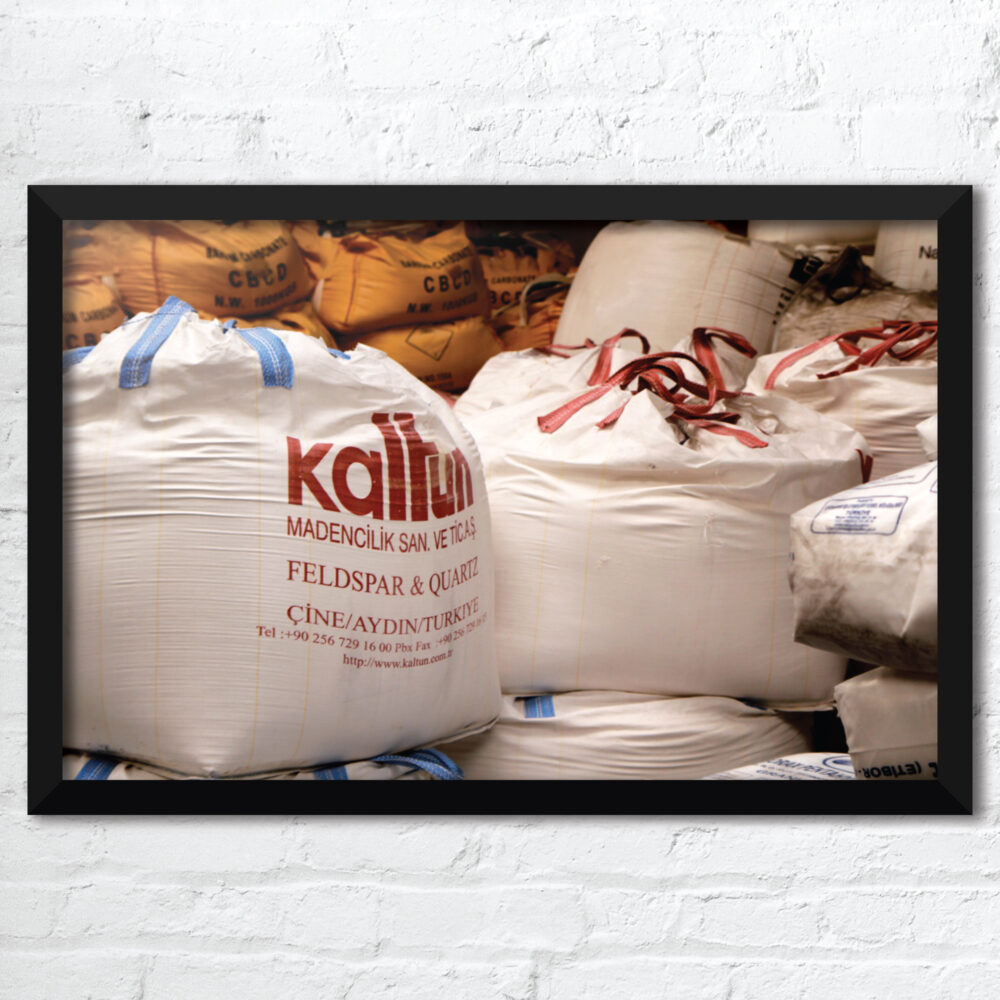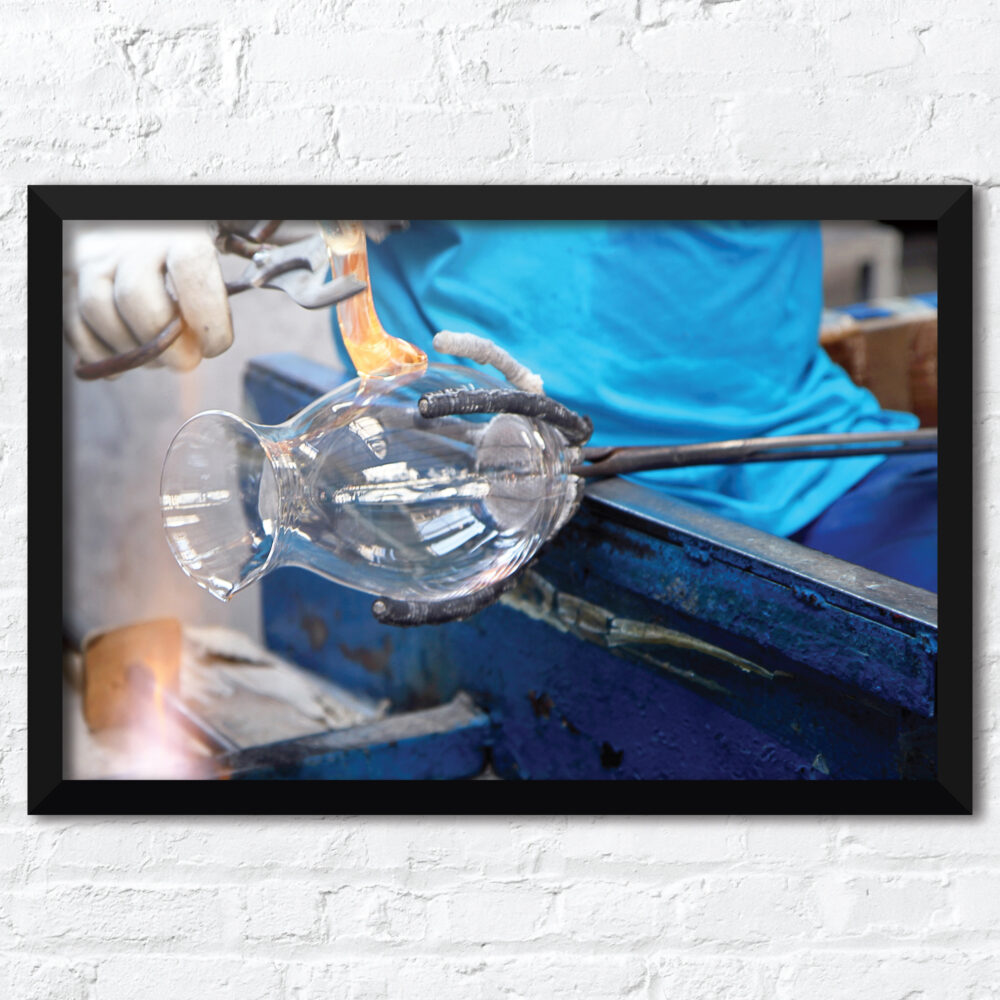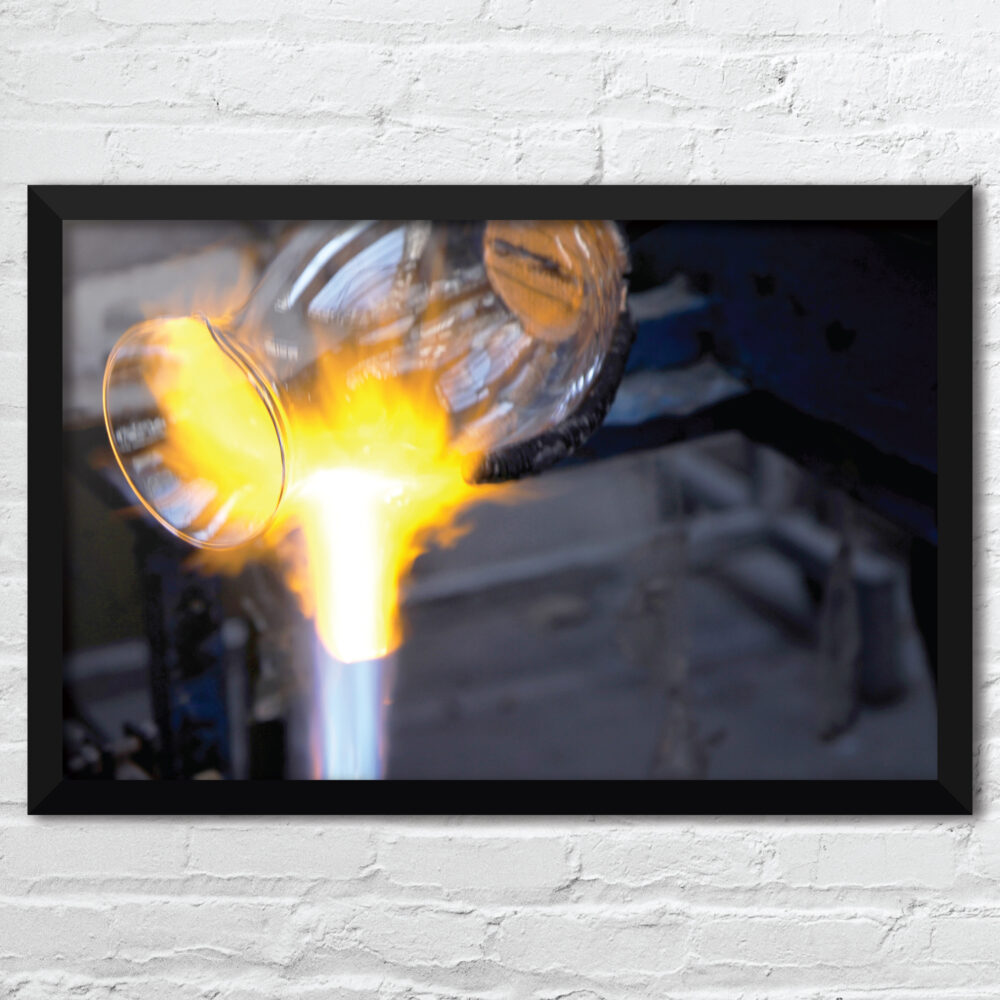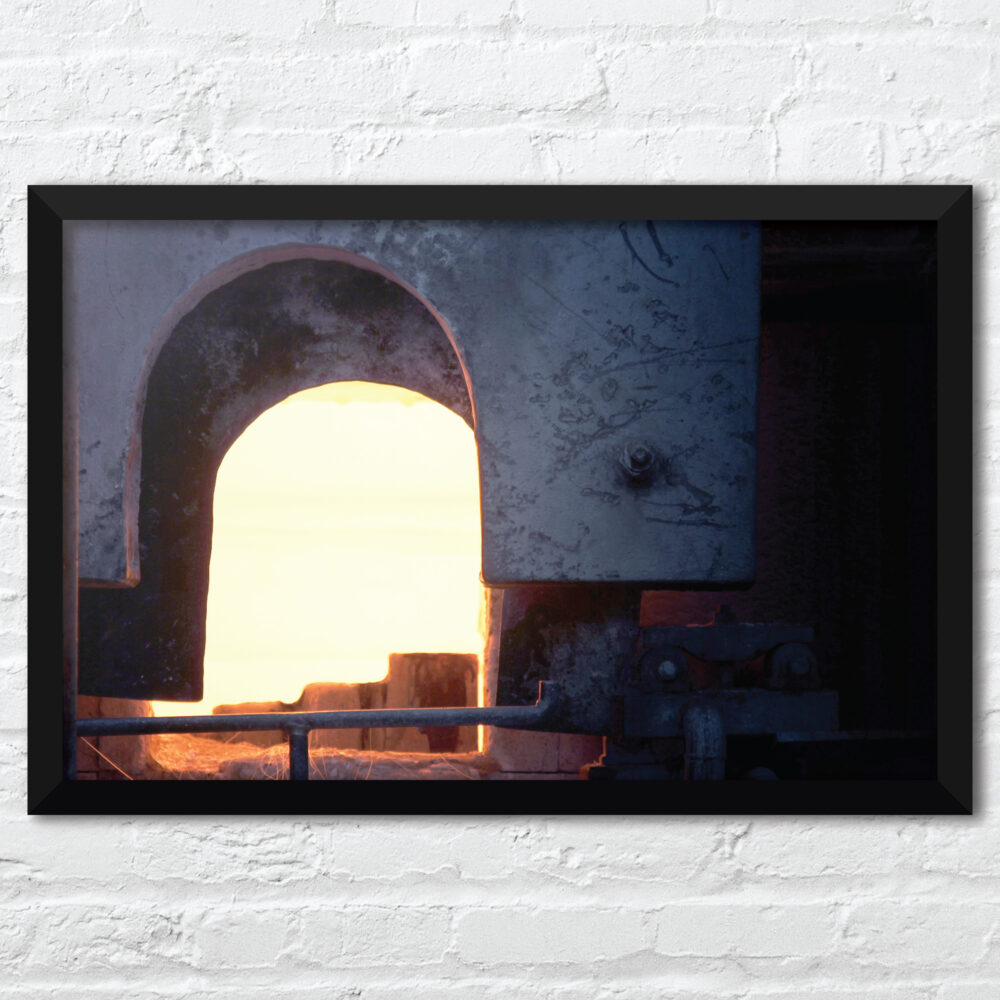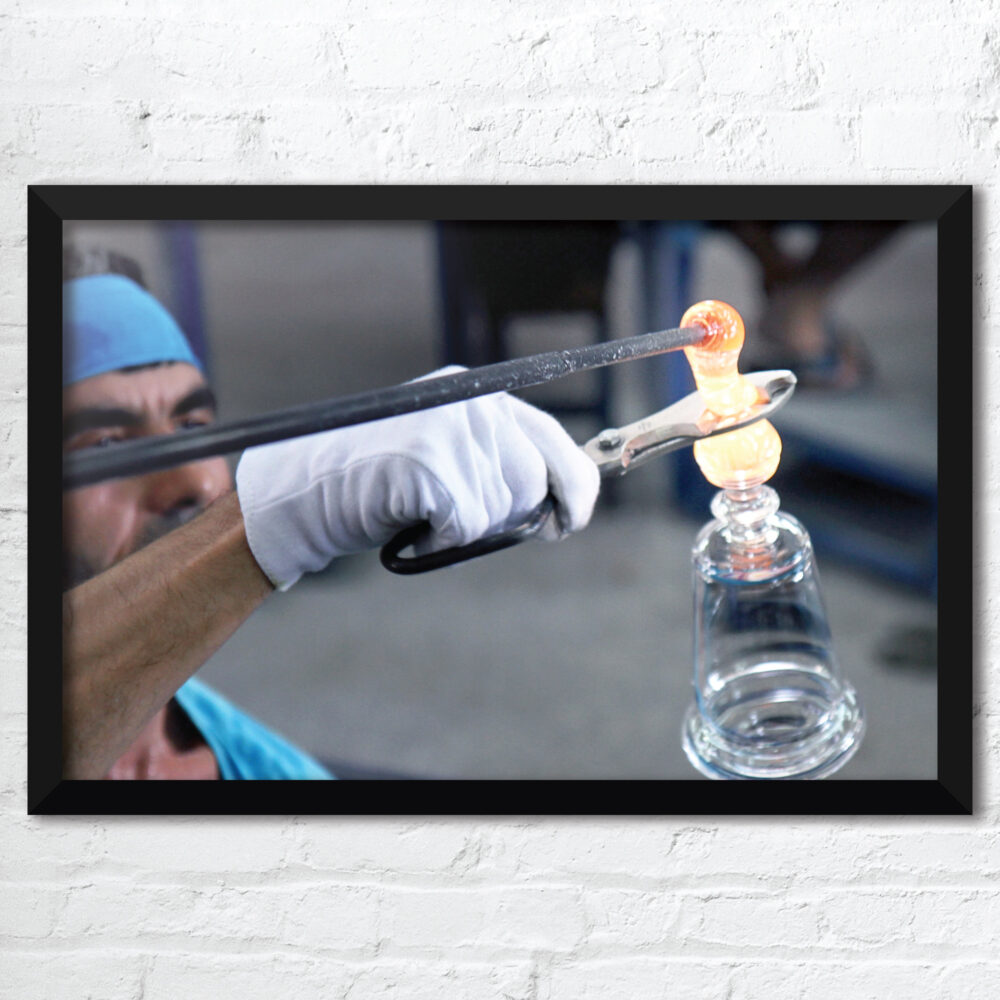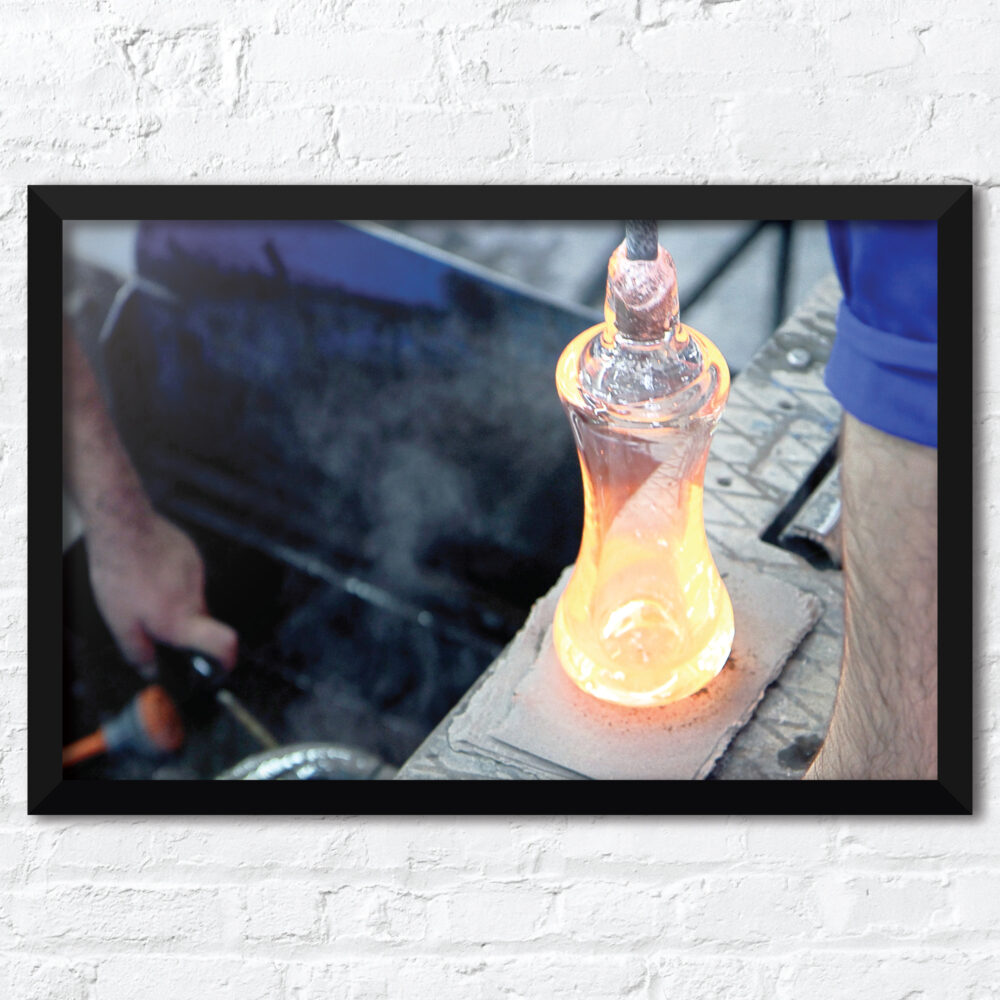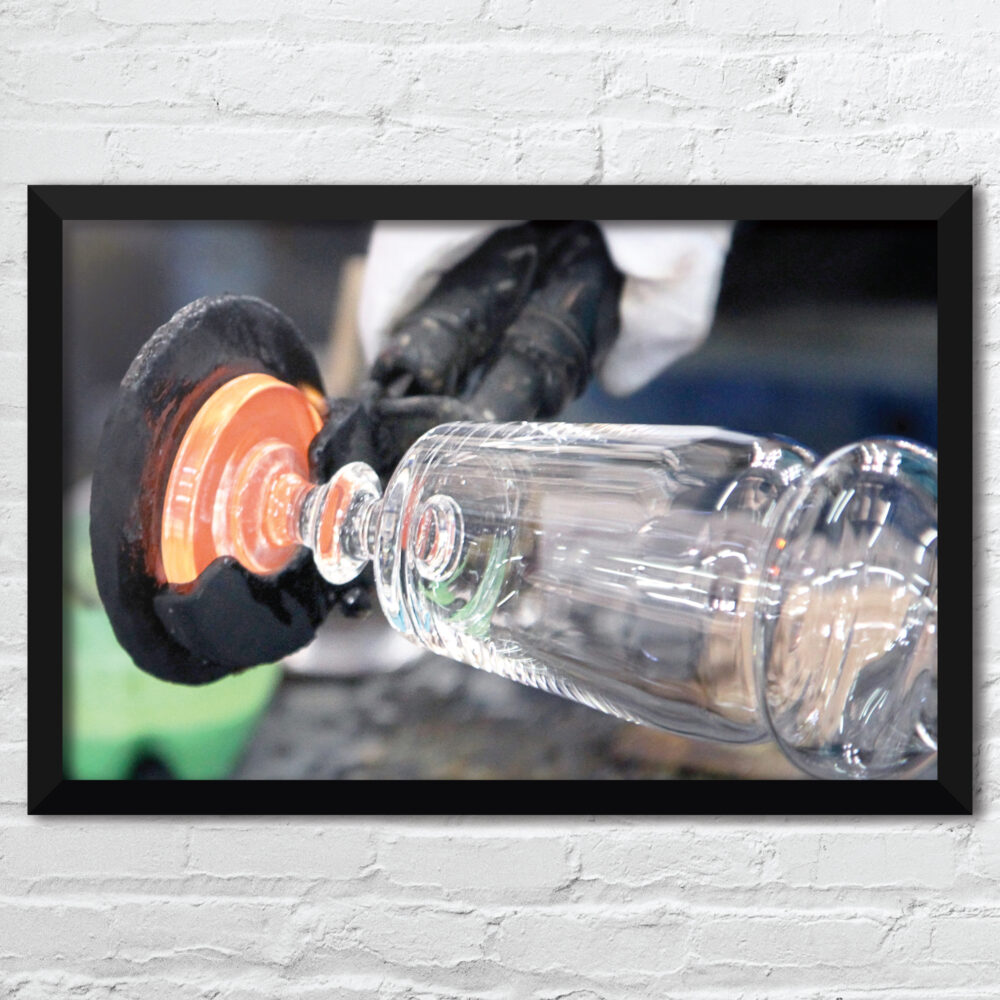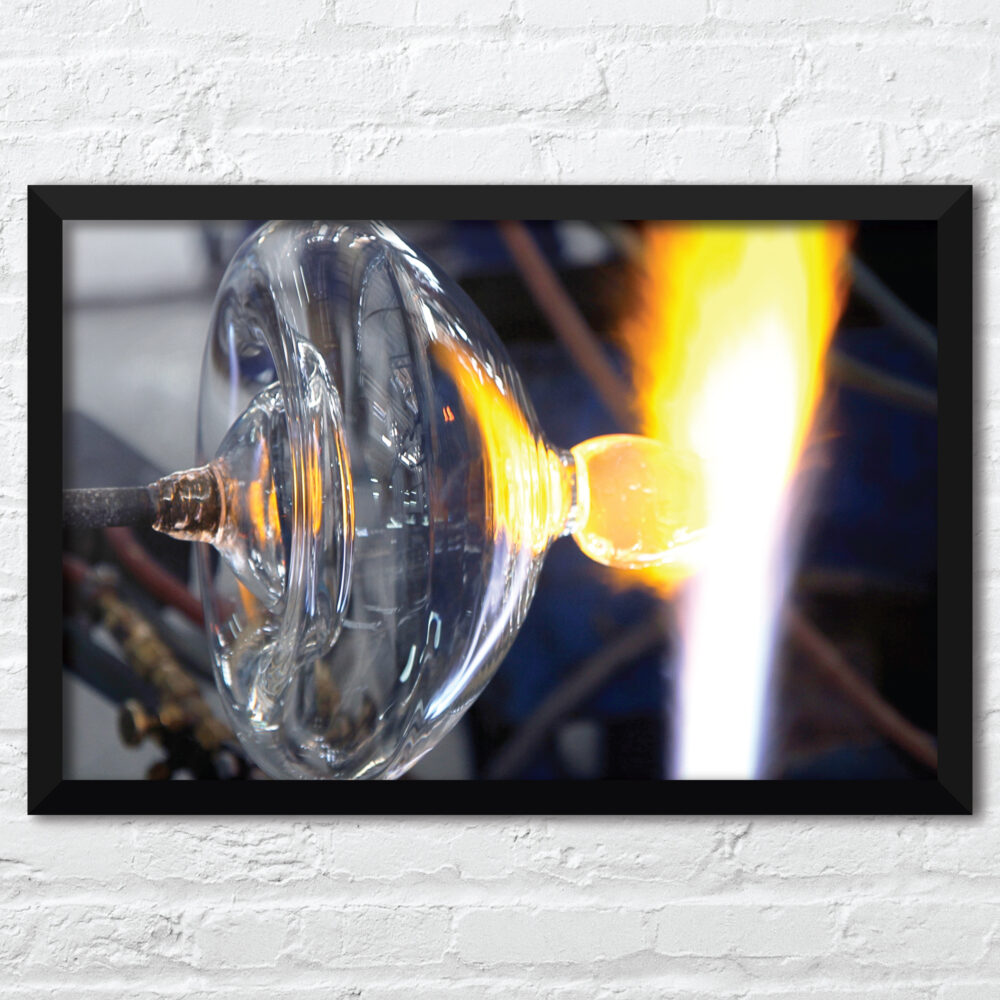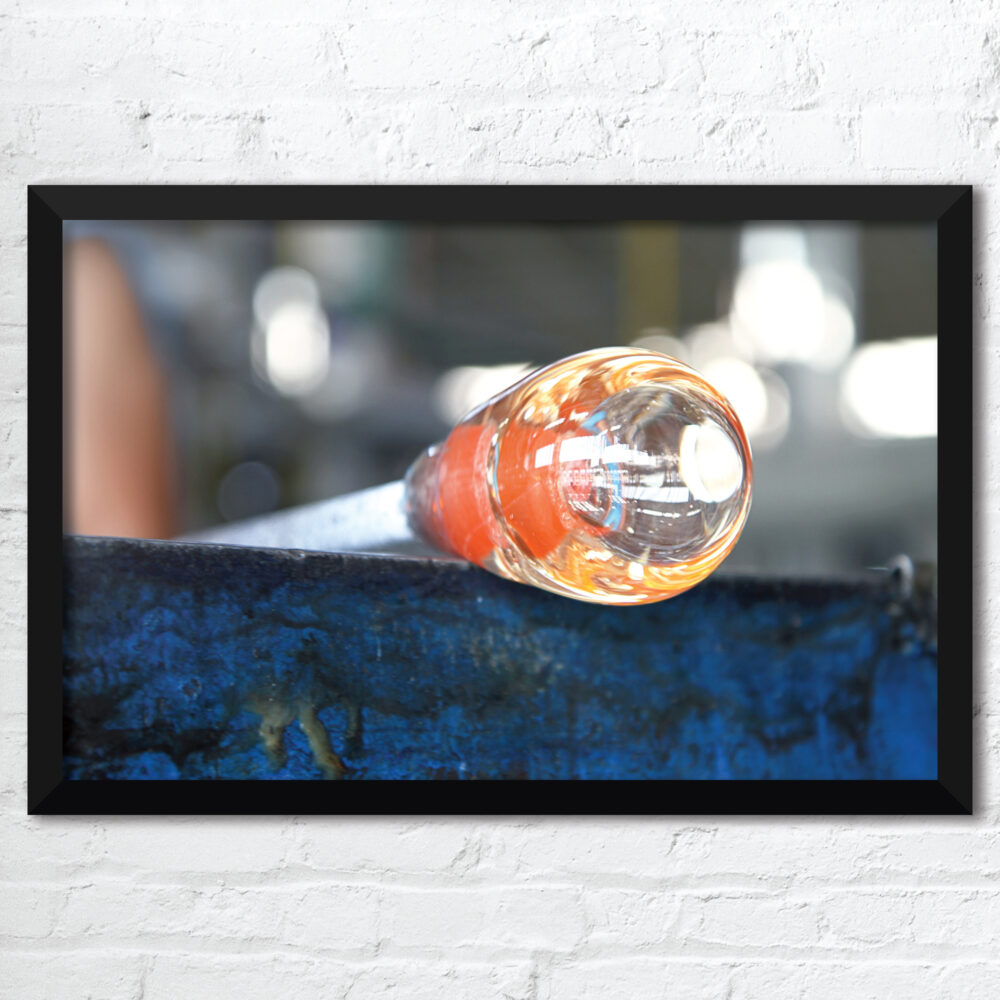MOUTH-BLOWN GLASS
Mouth-Blown Glass
Naturally-formed glass predates human existence. Formed as a result of high-temperature natural phenomena (including volcanic eruptions and lightning strikes), glass is created when various types of stone melt and then cool rapidly. Archeological evidence suggests that glass cutting tools made from obsidian, a natural glass of volcanic origin, have been used since the Stone Age (8700 – 2000 BC). The creation of man-made glass dates back more than 7,000 years to Mesopotamian plains of Southern Turkey and Northern Syria. This early glass was made into blocks and then carved like stone to fashion tools or vessels. The art of glass blowing is believed to have originated in Syria sometime between 27 – 14 BC. The long thin metal tube used by these these early artisans has changed very little since that time. By the last century BC, ancient Romans then began blowing glass inside moulds. The advent of this technique greatly increased the variety of shapes available.
Highly-prized during the Ottoman Empire (1259 – 1924), the 16th century is widely considered as the the golden age of Turkish glass-making. The Istanbul region possessed the natural resources required for making glass and manufacturing centers were established in the areas around Eğrikapı and the Palace of Hebdoman. Glass from this time ranged from functional to highly decorative. Mustafa Kemal Atatürk, the founder of Turkish Republic, established the modern Turkish glass industry in 1935. He envisioned a sector that would make the newborn nation self-sufficient. Today, Turkey exports glass to over 150 countries worldwide.
Showing all 9 results

